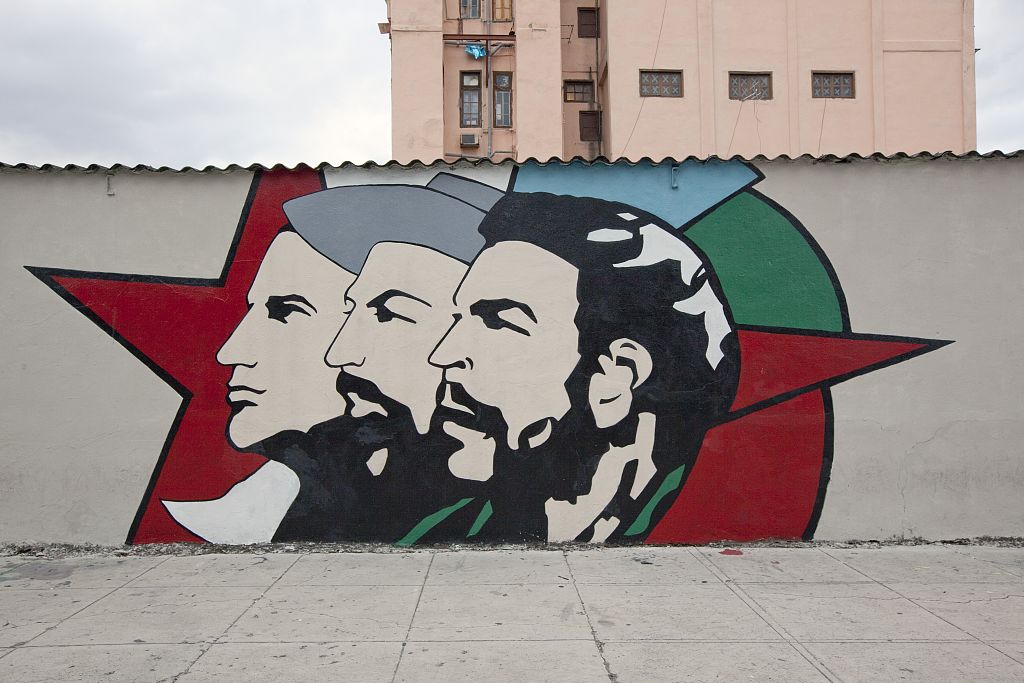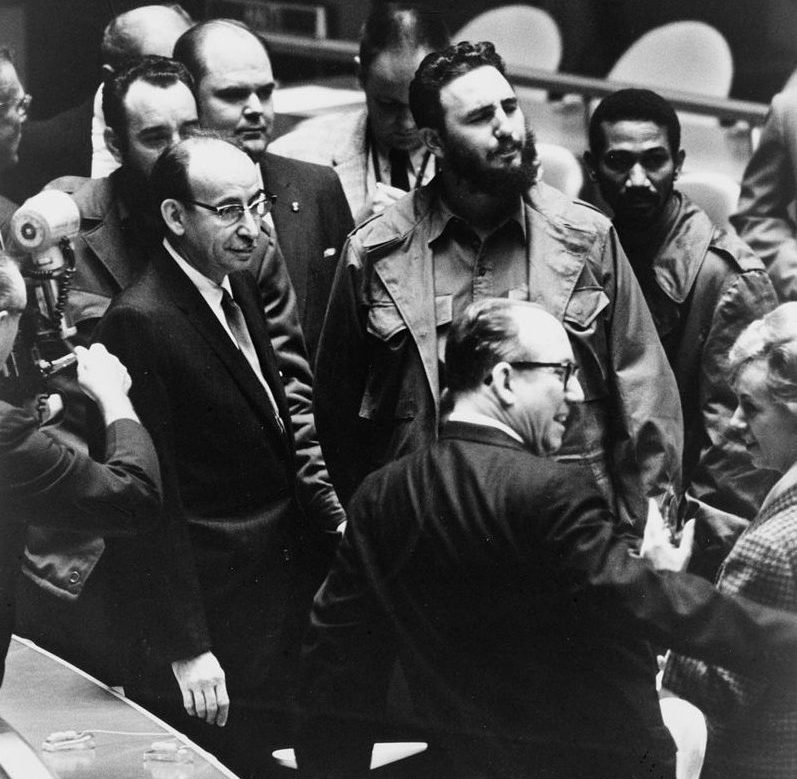Raceless Nationalism in Revolutionary Cuba: Rethinking Racial Politics
This post is part of our online roundtable on Devyn Spence Benson’s Antiracism In Cuba.

Devyn Spence Benson’s Antiracism in Cuba is a pioneering piece of research that opens up the path for a new and vibrant field within Cuban Studies. In this book, Benson offers a thoughtful and rigorous treatment of the antiracist imaginary that at times guided and eluded the Cuban state during the early years of the Revolution. While the idea that there is “still racism in Cuba” is now presupposed for most scholars based in the US, it is not often that we find treatments of race that effectively capture the nuances, complexities, and contradictions of Cuba’s contemporary racial politics. Benson skillfully illuminates the entanglements of race and nation in her work, adding nuance and detail to a history that refuses to be easily bifurcated into “blackness” and “Cubanidad.” Instead, she draws attention to the intricate skein of relationships, negotiations, and calculations that Black Cubans deployed before and during the revolutionary years to reshape the island’s racial landscape.
Benson examines these complicated relationships in part through an elaboration of the term “raceless nationalism.” Though the ideas that undergird raceless nationalism are not new in and of themselves, Benson breaks new ground in the way she imagines and deploys the discursive possibilities of this term. In Benson’s text, “raceless nationalism” captures a range of beliefs, practices, and ideologies that created a larger set of racial logics in revolutionary Cuba. Benson offers a rare glimpse into a young revolutionary government as it struggled to define and navigate this discourse of racelessness. In so doing, she shows what is easy to claim, but hard to demonstrate: that the Cuban nation (or any nation) was hardly a free-standing or “always already” category, but rather an unwieldy, cumbersome, and often incomplete institution that had to be made and lived. Benson beautifully captures the fraught nature of this process, allowing insight into the consolidation of a national identity whose parameters have fascinated scholars for more than four decades. We come away from the text with a deep appreciation for the sometimes clumsy, often dizzying process of transforming a radical idea into a national reality, and gain much insight into the ways that social movements have become institutionalized in different contexts around the world. Perhaps most of all, we get a clear sense of how different historical actors were constrained and empowered by the possibilities of the historical moment.
Benson’s discussion of state-produced antiracist measures, what she calls “antiracism from above,” highlights the manner in which the revolutionary state sought to manage the messiness of race and to discipline the radical possibilities of racelessness the Revolution opened up. In the midst of this upheaval, Benson shows that the revolutionary state had to strategically manage white fears—very old white fears—that came with black inclusion. Most importantly, the state had to skillfully choreograph a political culture that extended citizenship rights to Black Cubans (at least nominally) without alienating their white constituents. Benson’s project thus highlights a previously unseen dimension of the early Revolutionary years: that managing white anxieties became a central preoccupation for the revolutionary government, and the revolutionary state’s ability to navigate these racial landmines shaped its evolving struggle for legitimacy. It is fascinating to think about the deeply ironic parallels between this nation-building process in Cuba and the manner in which US social movements from the 1960s and ‘70s were converted into serviceable discourses such as “diversity” and “multiculturalism” in a neoliberal moment.
Benson also uncovers a range of different voices, heretofore unheard, of Black Cubans who experienced the project of revolution in a variety of ways. This is particularly important because according to the popular imagination, unlike other parts of the Americas, Cuba never experienced a black political movement in the 1960s. Benson’s work disrupts this narrative and fills a substantial gap in the historiography about Black political activism during this period. Her book presents everyday Black Cubans who struggled to make meaning of, and place pressure on, the promises of equality that saturated the revolutionary landscape. Even more importantly, she demonstrates how Black Cubans called upon their own historical knowledge and experience to assimilate the new (or resurrected) rhetoric around racelessness. In spite of the destruction of some of the oldest and most respected black institutions on the island, Black Cubans mobilized familiar strategies to extract resources, create professional openings, and redefine the possibilities of citizenship. What becomes clear is that Black equality had to be placed on the revolutionary agenda, and state officials were moved to the left, so to speak, by the outspoken radicalism of black activists. Contrary to other texts about this period, Benson shines light on the autonomous black organizing that took place in Cuba during the 1960s, allowing insight to a quandary that has haunted Latin America for centuries: how to integrate radical black political projects into a national narrative of multiracial harmony, or in this case, racelessness.
As a historian of nineteenth-century Cuba, I was particularly struck by the deep historicity of Benson’s research, and the skillful ways in which she delineates this project of racelessness as both a continuation of and a departure from the ideological work of earlier periods. She shows unequivocally that this revolutionary movement did not emerge in a vacuum, but rather relied on and revealed much of the same racial logic that defined Cuba for over a century before the rise of the 26th July Movement, or M-26-7. Throughout the text, Benson demonstrates that Fidel Castro and other members of the revolutionary leadership fashioned themselves as the political descendants of José Martí and invested significant energy into crafting the Revolution as the unfinished project of independence. Benson provocatively suggests that the new government’s efforts to position itself as the heir of independence were central to its struggles for legitimacy, both at home and abroad. This represents an intriguing and savvy historical maneuver—casting Cuban history itself as incomplete, its most cherished dream unfulfilled, until M-26-7 took power. Clearly, the young revolutionary government mobilized a very particular version of history to construct the political present.

This book raises several important questions for me that can hopefully open the doors for further conversation. The first is about the history of slavery and how it figured into Cuba’s emerging national identity. In several places Benson discusses the best-known slave rebellions of the nineteenth century, arguing that these insurgencies “created lasting anxieties about black-led politics that reappeared throughout the early republic and post-1959 any time Afro-Cubans pressed too strongly for racial equality.” This is an excellent observation, but it is also true that the Revolution appropriated the history of slave rebellions as part of a national imaginary seeking to fashion itself as antiracist and anticolonial. There is a fascinating tension here: on the one hand, scholars like Juan René Bentancourt and Walterio Carbonell held up figures like José Aponte, whose radical black politics sat uncomfortably within a revolutionary discourse premised on racelessness. On the other hand, Fidel was well known for making speeches that praised slave rebellions as quintessential examples of revolutionary struggle, and the government helped to build several iconic memorials, such as the one commemorating the Triunvirato rebellion of 1843. I’m interested in how this rhetoric spoke to Black Cubans who were looking for visibility and vocality during the revolutionary project. This celebration of slave-rebellion-as-national-history is rare in Latin America, and therefore constitutes a substantial intellectual intervention. Was this an easy case of appropriation, or something more complicated? What did this holding up of slave rebellions—rebellions that were still very much alive in the memory of most Black Cubans—mean for their interest in and commitment to the revolutionary government? How do these moments align with the image of Carbonell holding up the Apontes of Cuban history, and essentially being punished for it?
I would also be interested to know how gender figures into Benson’s arguments. Gender structures and hierarchies are always crucial to any revolution struggle and central to the process of nation-building. This is perhaps best seen in Che’s theory of “the new man,” which became one of the defining ideologies of the Revolution. Che’s “new man” was indeed a radical subject, but he was also implicitly white, male, and heterosexual. Benson mentions the actions and investments of Black women at several points in the text, but I wanted to know more about how their stories changed the overall narrative. How would an intersectional analysis shift the ways in which we understand the racial dimensions of the Revolution? Did women see their struggles as linked to those of Blacks as a group, or vice-versa? How were the Revolution’s ideas about marriage, family, and sexuality received within Black communities? In other words, how did gender impact the ways in which Black Cubans responded to the post-1959 revolutionary struggle?
My final question is about Cuba’s relationship to anti-colonial movements on the African continent. In 1975 Cuba launched Operation Carlota in support of Angola’s anticolonial struggle against Portugal. However, Cuba had developed informal ties with the Angolan liberation movement long before that time, with Che solidifying a formal alliance with the MPLA in 1965. How did this support for Angola and other African anticolonial movements make its way into Cuba’s internationalist rhetoric during these early years? How did Black Cubans interpret this rhetoric? Did the revolution’s support of African liberation movements increase its legitimacy in the eyes of Black Cubans? Were black activists attracted to this aspect of Cuba’s foreign policy, or somehow involved in helping to shape it? I offer these questions as food for thought, inspired by a bold, exciting, and groundbreaking book.
Copyright © AAIHS. May not be reprinted without permission.
